Would you want a side-order of plastic together with your meal? The probabilities are it’ll include one anyway.
The variety of microscopic plastic particles which have discovered their method into our surroundings is so quite a few that nearly any meals that you simply select to eat – contemporary or frozen, precooked or uncooked – is prone to include them.
However you will not spot them in your meals – or really feel them as you swallow.
These tiny particles are referred to as microplastics – sized from 5mm right down to 0.0001mm, or nanoplastics, that are something smaller than that.

Researchers are urgently looking for methods to restrict the quantity of plastic absorbed into our our bodies
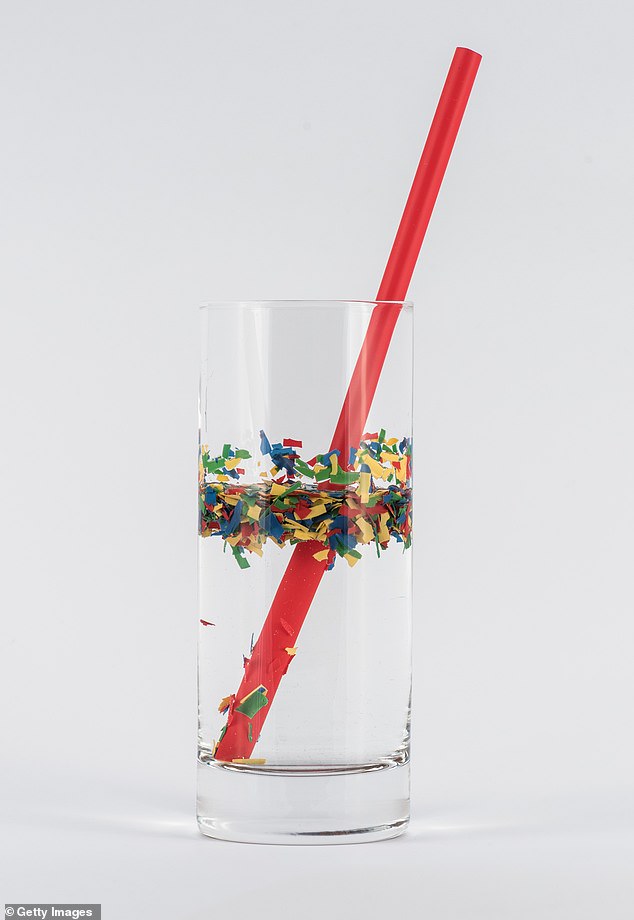
Plastics break down all through the surroundings and may enter the meals chain by way of water, soil, feed and even the air
Every week we swallow about 5g of plastic particles, the burden of a bank card – based on a assessment of knowledge from 50 research, revealed in 2019 by scientists on the College of Newcastle in Australia.
Over a 12 months this provides as much as 260g, or half a pound.
Researchers at the moment are urgently looking for methods to restrict the quantity absorbed into our our bodies (for steps you possibly can take, see under) as science begins to uncover the results this contamination could also be having for our well being – and, apocalyptic as it would sound, for the way forward for mankind.
For simply this week scientists have reported discovering microplastics in males’s testicles. Researchers, led by Professor Xiaozhong Yu on the College of New Mexico within the US, examined testes from human post-mortems as properly from animals.
Professor Yu mentioned: ‘Originally, I doubted whether or not microplastics might penetrate the reproductive system. Once I first obtained the outcomes for canines I used to be stunned. I used to be much more stunned once I obtained the outcomes for people.’
Researchers have urged microplastics may assist clarify declining sperm counts in males.
Whereas the total image of the harm these particles could trigger is but to emerge, the proof is mounting.
Final month, for instance, a research by the identical college, revealed within the journal Environmental Well being Views, discovered that the microplastics from our meals can invade our bloodstream, liver, kidneys, even our mind.
A number of weeks earlier the New England Journal of Medication reported that having microplastics and nanoplastics in your arteries could considerably increase the danger of growing cardiovascular issues.
This was based mostly on an evaluation of sufferers with fatty deposits known as plaques of their arteries – these whose plaques contained microscopic plastic particles have been greater than 4 occasions extra seemingly than regular to have a coronary heart assault or stroke within the ensuing three years.
In the meantime in April neurosurgeons in China, writing within the journal Toxicology, warned that microplastics and nanoplastics can get previous our mind’s pure defence in opposition to an infection – the ‘blood-brain barrier’, a usually formidable barrier that often retains harmful substances from coming into the mind – and disrupting very important features akin to the best way our mind cells work.
The earlier month one other group of researchers in China reported that in lab research on mice, the presence of microplastics within the mind seems to speed up the development of early dementia signs – known as gentle cognitive impairment – into full-blown Alzheimer’s illness.
In all these research the harm outcomes from the microplastics sparking dangerous ranges of continual irritation within the physique as our immune system tries to combat off these artificial invaders.
Microplastics might have a longer-term impression on us all: in 2021 a research within the Journal of Hazardous Supplies discovered that male mice fed microplastics subsequently grew to become infertile – irritation appeared to have affected the sperm-producing cells within the testes – and the report warned the identical impact could also be seen in people.
‘Sadly we won’t keep away from publicity to microplastics,’ Nina Schrank, head of plastics at Greenpeace UK, advised Good Well being. It is because plastics break down all through the surroundings, and thus can enter the meals chain by way of water, soil, feed and even the air.
So what, if something, can we do to guard ourselves in opposition to the plastic plague?
Whereas the researchers behind final month’s research within the journal Environmental Well being Views are wanting on the impression on animals of a high-cholesterol/high-fat food regimen, or high-fibre food regimen (to see if food regimen impacts the uptake of microplastics into our physique), what can we do proper now?
Luckily, scientists are starting to counsel some helpful solutions…
Wash your rice
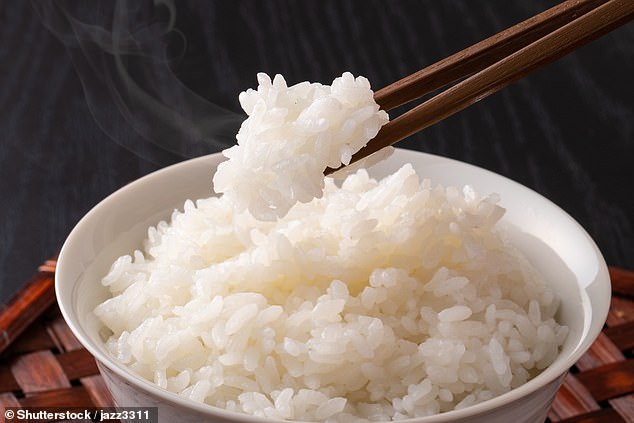
Dr Jake O’Brien says: ‘The degrees of plastics present in pre-cooked or immediate rice was 4 occasions larger than in raw rice’
Unlikely as it would sound, rice could be ridden with microplastics, based on a research by the College of Queensland.
Lead researcher and epidemiologist Dr Jake O’Brien warned within the Journal of Hazardous Supplies that for each 100g (half a cup) serving of rice we eat, we eat on common 3mg-4mg of plastic. On common, this implies we every could swallow round 1g per individual yearly through consuming rice alone.
If we eat immediate (i.e. pre-cooked) rice, this determine leaps significantly, his analysis present in 2021.
Dr O’Brien says: ‘A big end result was the degrees of plastics present in pre-cooked or immediate rice, because it was 4 occasions larger than in raw rice, averaging 13mg per serving.’
A lot of that is right down to the best way that rice is packaged and processed, throughout which era it comes into contact with myriad plastics that may rub onto the grains.
This, Dr O’Brien provides, means we are able to considerably scale back the microplastic content material of rice just by rinsing it completely first.
‘We discovered that washing rice earlier than cooking lowered plastics contamination by as much as 40 per cent,’ he says.
Be careful for wine with plastic corks
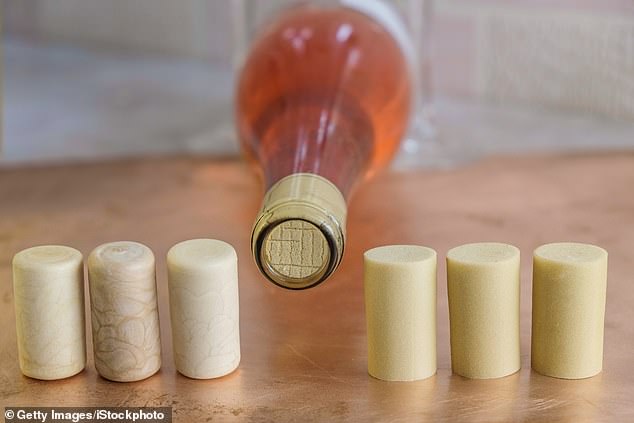
Researchers discovered vital larger ranges of microplastics in wine that had plastic corks on the bottles
Stick to old school corks if you wish to keep away from microplastics in your tipple, suggested researchers within the journal Meals Chemistry in 2020.
Corks went out of trend as a result of patrons feared that they tainted wine, leaving it ‘corked’.
However researchers on the College of Aveiro in Portugal discovered that 24 of the 26 bottles of white wine with polyethylene stoppers they examined contained considerably excessive ranges of microplastics, which the investigators mentioned had migrated from the plastic corks.
Select contemporary meals, moderately than processed
Extremely processed protein merchandise akin to fish sticks, rooster nuggets, tofu and plant-based burgers include considerably extra microplastics than minimally processed merchandise akin to wild-caught fish and uncooked rooster breast, researchers reported within the journal Environmental Air pollution in February.
Ecologists on the College of Toronto in Canada analysed greater than a dozen several types of standard store-bought proteins together with seafood, pork, beef, rooster, tofu and a number of other plant-based meat options.
They discovered that some extremely processed protein merchandise, akin to breaded shrimp, fish sticks and rooster nuggets, seem to include considerably extra microplastic particles than minimally processed samples.
They mentioned this implies that meals processing could possibly be a supply of plastic contamination.
This resonates with earlier analysis, within the journal Atmosphere Worldwide in 2019, which discovered that consumption of ultraprocessed meals akin to hamburgers, ready-to-eat comfort meals, oven chips, ice cream and fizzy drinks is related to larger ranges of microplastics within the physique.
The research of urine samples from greater than 2,000 adults and youngsters, led by epidemiologists on the Johns Hopkins Bloomberg Faculty of Public Well being, Baltimore, warned that the microplastics they discovered have been excessive in phthalates.
The investigators warned that these chemical substances are identified hormone-disruptors related to ‘wide-ranging opposed well being outcomes’, which embrace weight problems, diabetes and reproductive issues.
What’s extra, the researchers discovered ranges of phthalate microplastics have been highest in youngsters.
It warned that, ‘youngsters who’re extra susceptible to toxicants and have a tendency to eat extra ultra-processed meals than adults’.
It additionally added that microplastic contamination could ‘contribute to opposed well being results of ultra-processed meals’, which embrace weight problems and diabetes.
…and focus extra on veg
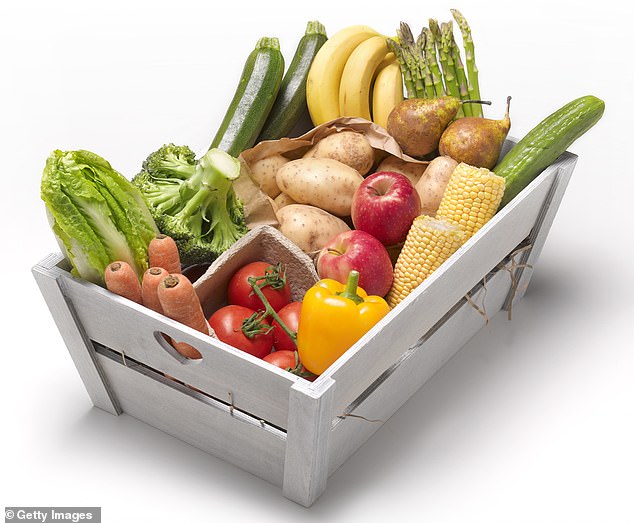
Some greens include fewer microplastics than others. Lettuce has the bottom stage of contamination
Whereas fruit and veg ought to underpin any nutritious diet, chances are you’ll wish to eat extra of some than others.
Meals hygiene scientists on the College of Catania in Italy discovered that, general, fruits include considerably larger ranges of microplastics than veg – of all of the produce they surveyed in a 2020 research, lettuce had the bottom stage of microplastic contamination.
The scientists counsel that fruit take up extra microplastics typically as a result of it absorbs extra water, which carries the plastics, and likewise as a result of the timber that bear fruit reside for years in soil from which they draw plastic air pollution.
Against this, they mentioned, greens reside in soil for under weeks or months.
That is echoed by analysis from 2020 within the journal Nature Nanotechnology, the place scientists discovered that nanoplastics accumulate in crops by way of water being absorbed by the foundation techniques.
Select tea baggage with care
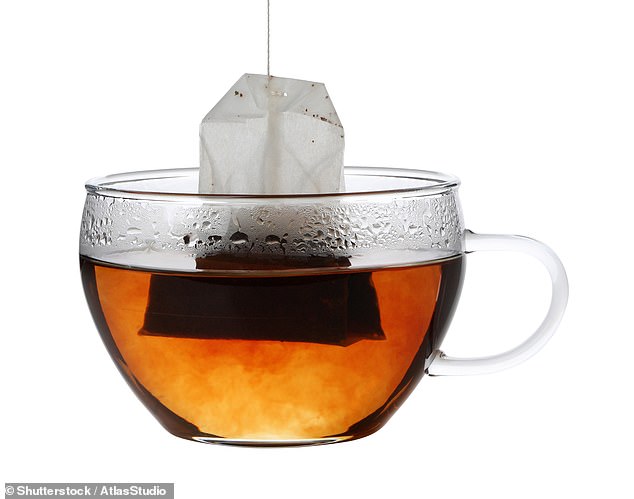
You may wish to keep away from utilizing tea baggage altogether and go for loose-leaf tea as a substitute, or go for biodegradable tea baggage
Steeping a plastic tea bag at a brewing temperature of 95c releases round 11.6 billion microplastics and three.1 billion nanoplastics right into a single cup, based on a 2019 research from McGill College in Canada, revealed within the journal Environmental Science & Know-how.
The degrees of microparticles launched from the tea bag packaging are a number of occasions larger than plastic ranges present in most different meals, the researchers mentioned.
The best approach to keep away from that is to purchase loose-leaf tea (ideally in non-plastic packaging) or select biodegradeable tea baggage.
Suppose twice about plastic bottled water

As a substitute of shopping for water in plastic bottles, or refilling previous ones with faucet water, equip your self with a glass or stainless-steel bottle you can preserve topped up
You may assume it apparent to keep away from plastic bottles of water, however it is a compelling motive why: a normal half-litre plastic bottle of water can include a median of 120,000 plastic particles from seven several types of plastic, researchers from Columbia College warned earlier this 12 months.
Utilizing extremely correct lab expertise, they discovered that bottled water offered in retailers can include as much as 100 occasions extra bits of plastic than beforehand estimated.
About 90 per cent of the particles they discovered are nanoplastics – so small they’ll solely be seen utilizing spectroscopy, which detects the wavelengths of sunshine that nanoplastics mirror within the water.
Nanoplastics’ microscopic dimensions make all of them the extra harmful, wrote the researchers within the journal Proceedings of the Nationwide Academy of Sciences.
It is because at 1,000th the common width of a human hair, nanoplastics can migrate by way of the tissues of the digestive tract or lungs into the bloodstream and into our cells.
The rationale for bottled water’s high-plastic content material is defined in a report by a world collaboration of consultants within the journal Environmental Well being in 2020.
They mentioned that warmth utilized in bottle-processing, mixed with lengthy storage occasions, which could be as much as two years, allow excessive ranges of microplastics emigrate from the packaging into the water.
Publicity to microplastics is sort of thrice larger in individuals who depend on utilizing plastic water bottles than various containers, reported a 2019 research within the journal Environmental Science and Know-how by researchers on the College of Victoria, British Columbia, in Canada.
The best resolution is as a substitute of shopping for water in plastic bottles – or refilling previous ones with faucet water, equip your self with a glass or stainless-steel bottle you can preserve topped up.
Professor Richard Thompson, a plastics air pollution professional on the College of Plymouth, advised Good Well being: ‘Single-use gadgets akin to plastic bottles are the place I might most counsel that individuals scale back their consumption. It is higher for folks and for the surroundings.’
Do not overdo the shellfish
Obtainable research proof about plastic ranges within the flesh of fish typically factors to the truth that fish can include vital ranges of microplastics that they eat from their environments and meals, so ubiquitous is plastic air pollution within the planet’s waters.
Even molluscs, particularly mussels and oysters, are affected, based on researchers on the College of Barcelona in 2023.
As a lot as 85 per cent of mussels and 53 per cent of oysters they examined had ingested microplastics. They urged that such excessive ranges are sometimes the results of the creatures residing in river estuaries, the place they ingest plastic pollution from each river and sea.
Test your kitchen and range ware
In solely three minutes of microwaving, plastic containers can launch as many as 4.22 million microplastic and a pair of.11 billion nanoplastic particles into meals from only one sq. centimetre of plastic, based on environmental engineers on the College of Nebraska-Lincoln within the US.
The researchers, writing within the journal Environmental Science & Know-how final 12 months, warned that that is significantly regarding when heating child meals.
The identical research discovered that storing meals in plastic containers for greater than six months, both within the fridge or at room temperature, may also launch hundreds of thousands, even billions, of microplastics and nanoplastics into the contents.
So change to glass, ceramic or metallic containers.
Even merely masking plated meals with a ceramic plate or microwave-safe glass lid will radically scale back plastic-particle publicity in contrast with microwaving it in a plastic container.
It is a comparable story with cookware, mentioned researchers at Plymouth College, within the journal Science of The Complete Atmosphere final month.
They warned that utilizing cookware containing plastic ‘leads to vital will increase in microplastic contamination’.
Quite a few research present that non-stick coated cookware could also be an issue, as it may possibly probably develop cracks within the coating and launch plastic particles.


